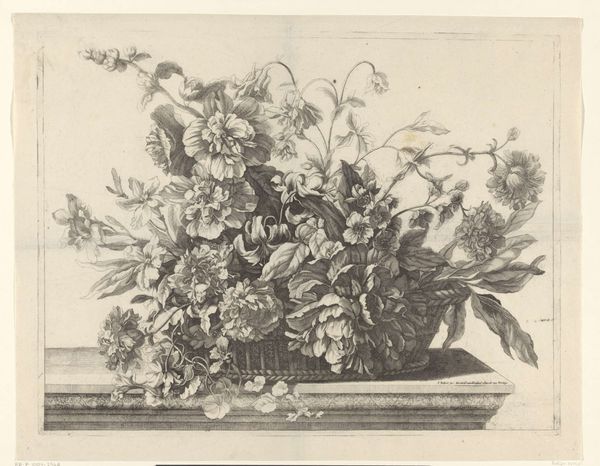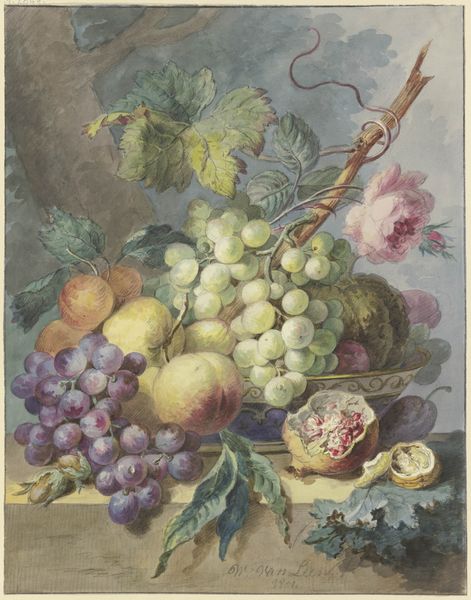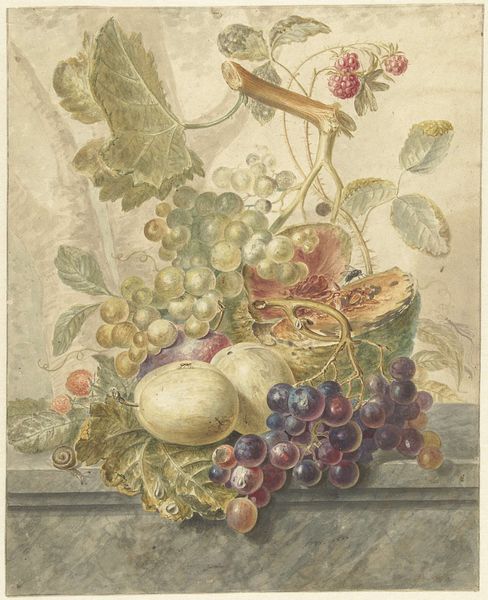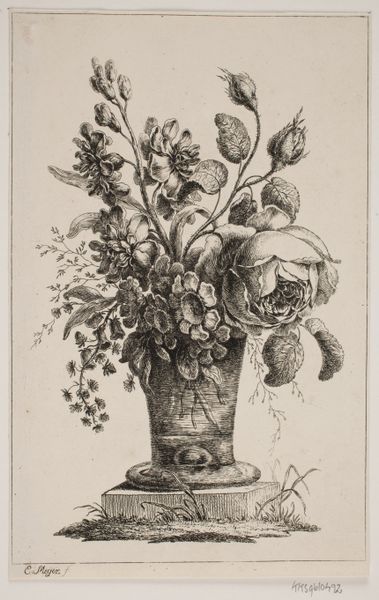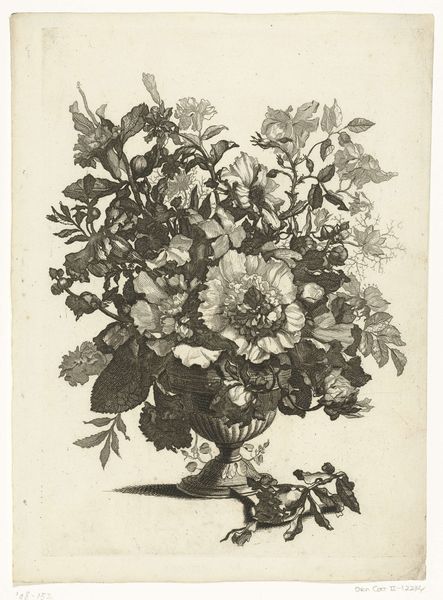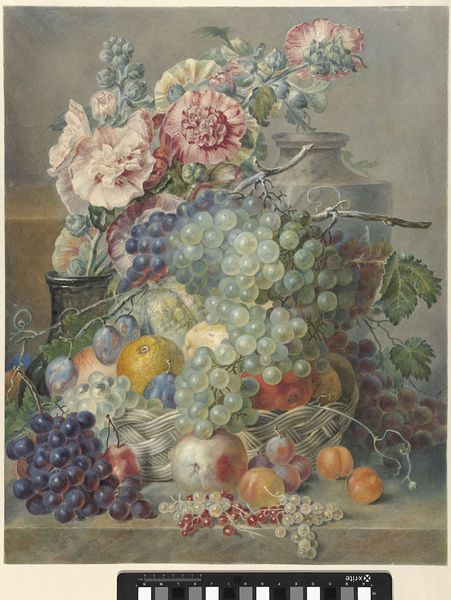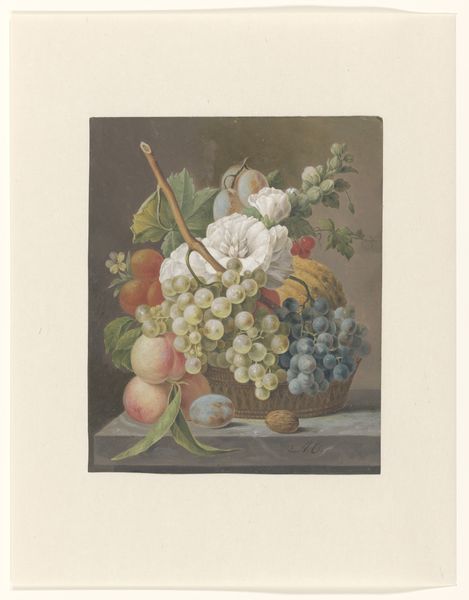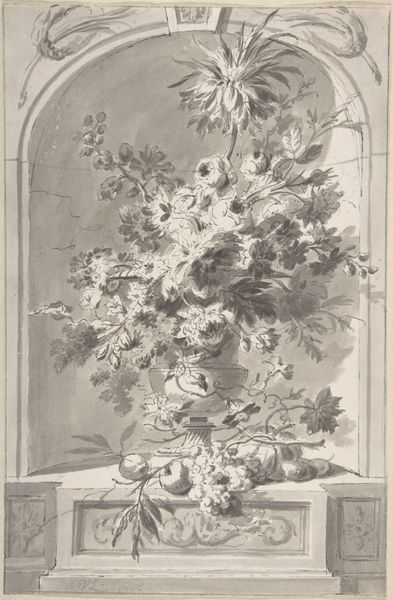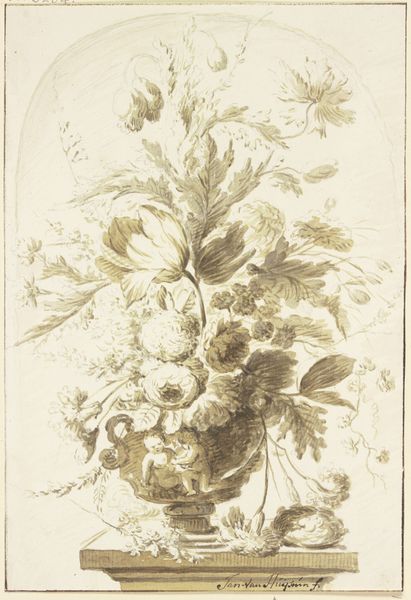
drawing, print, graphite
#
drawing
#
baroque
# print
#
fruit
#
coloured pencil
#
graphite
Dimensions: 8 x 6 1/4 in. (20.3 x 15.8 cm)
Copyright: Public Domain
Curator: Here we have Jan van Huysum’s “A Basket of Fruit,” likely created sometime between 1695 and 1749. It’s a stunning still life drawing, rendered in graphite and colored pencil and currently held in the collection of the Metropolitan Museum. Editor: It strikes me as both opulent and transient, doesn't it? All this bounty rendered in delicate pencil strokes gives it this feeling like it could vanish at any moment. Curator: Absolutely. Still life as a genre carries inherent implications of temporality. Van Huysum, working within the late Dutch Baroque tradition, was acutely aware of the market for this kind of image. Patrons loved displays of wealth and prosperity but were constantly reminded of their fleeting nature. Editor: And how fascinating to consider who these patrons were. You see the overabundance of fruit, which wasn’t readily available to the majority of the public, right? Van Huysum showcases access, class. Even the wilting leaves suggest a lack of practicality. Were these images ever a point of contention, do you think? Curator: While overt critiques might be rare, art always exists within a complex web of social and political meaning. During the Baroque period, artists walked a tightrope, needing to satisfy wealthy patrons while sometimes subtly commenting on societal inequalities. The rise of mercantile power enabled a lavish lifestyle for some and pushed a greater number into the lower working classes. Works like "A Basket of Fruit" reflect that power imbalance. Editor: So this lavish display becomes less about mere aesthetic beauty and more about solidifying a specific power structure. Curator: Precisely. And Van Huysum's technical skill reinforces that message. The detail in the grapes, the luminosity of the peaches… it’s not just a picture; it’s a statement. Editor: I’m finding a bit of dark humor here, too. There is such painstaking precision in drawing the rotting bits of the plants or bruised parts of the fruit; perhaps this piece pokes fun at society’s obsession with materialism. What do you think? Curator: That's a perceptive point! It may function as a double-edged commentary, praising the prosperity but also serving as a memento mori—a reminder of death and decay that lurks beneath even the most beautiful surfaces. Editor: Seeing through a socio-historical lens truly amplifies what could seem like just another lovely, antiquated illustration. It offers so much food for thought. Curator: Agreed. It is amazing what art reveals once you delve a bit beneath the surface.
Comments
No comments
Be the first to comment and join the conversation on the ultimate creative platform.


